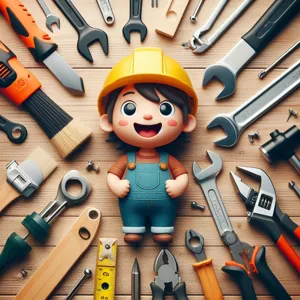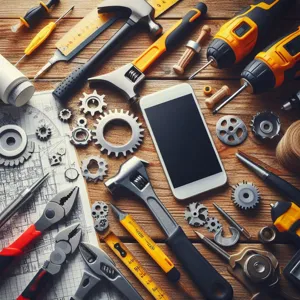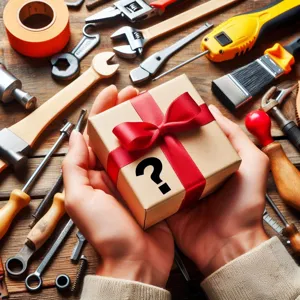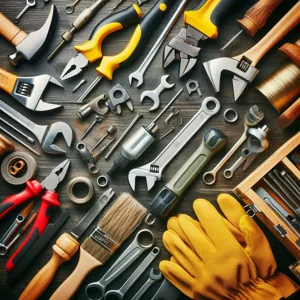Embarking on a motorbike camping adventure is one of the most exhilarating ways to connect with nature and experience the open road.
However, to ensure your journey is not only thrilling but also comfortable and safe, having the right camping gear and accessories is essential. From lightweight tents that pack easily to versatile cooking tools that make meal prep a breeze, the world of motorbike camping gear is vast and ever-evolving. In this ultimate guide, we will explore the must-have items that will elevate your camping experience, allowing you to embrace the freedom of the ride while enjoying the comforts of home under the stars. Whether you’re a seasoned rider or a newcomer eager to hit the trails, gear up with our carefully curated selection, and prepare to make unforgettable memories on the open road!
1. Introduction to Motorbike Camping

Motorbike camping is more than just a weekend getaway; it’s an exhilarating escape into the great outdoors on two wheels. Picture this: the open road stretches ahead, the wind whips through your hair, and the thrill of adventure beckons as you embark on a journey to explore breathtaking landscapes, serene camping spots, and hidden gems off the beaten path. Whether you’re cruising along coastal highways, navigating winding mountain roads, or traversing rugged terrain, motorbike camping combines the freedom of riding with the joys of camping, creating a unique experience that appeals to both nature lovers and motorcycle enthusiasts alike.
This vibrant activity allows riders to immerse themselves in nature while enjoying the camaraderie of fellow bikers. With every mile you cover, the world unfolds before you, revealing stunning vistas, picturesque campsites, and an array of wildlife waiting to be discovered. However, to make the most of your motorbike camping experience, having the right gear and accessories is essential. From lightweight tents designed for easy packing to versatile cooking equipment that makes meal prep a breeze, the right gear can enhance your adventure and keep you comfortable on the road.
In this guide, we will delve into the must-have motorbike camping gear and accessories that every rider should consider. Whether you’re a seasoned biker or a novice eager to hit the trails, this comprehensive overview will equip you with everything you need for an unforgettable journey. So, rev up your engines, pack your bags, and let’s hit the road to explore the exciting world of motorbike camping!
2. Choosing the Right Motorcycle for Camping Adventures
When embarking on a camping adventure, the motorcycle you choose can make all the difference in the world. Not all bikes are created equal, especially when it comes to handling the unique challenges of the open road and the rugged terrain that often accompanies camping trips. To ensure your journey is as enjoyable as possible, consider the following factors when selecting the right motorcycle for your camping escapades.
First and foremost, think about the type of terrain you’ll be traversing. If your adventures will take you along unpaved trails and backcountry roads, an adventure or dual-sport bike may be your best option. These motorcycles are designed to handle both on-road and off-road conditions, providing the versatility needed for any camping excursion. Models like the BMW GS series or the Honda Africa Twin are excellent choices, boasting robust suspensions and ample ground clearance to navigate rocky paths and muddy trails with ease.
On the other hand, if you plan to stick to scenic highways and well-maintained roads, a touring motorcycle could be the ticket for comfort and storage capacity. Touring bikes such as the Harley-Davidson Electra Glide or the Honda Gold Wing come equipped with spacious saddlebags, comfortable seating, and advanced technology, making long-distance travel a breeze. With these bikes, you can carry all your camping gear without sacrificing comfort on those extended rides.
Another crucial aspect to consider is the weight of the motorcycle. Heavier bikes may provide more stability on the highway but can be cumbersome when navigating tight trails or during low-speed maneuvers. Conversely, lighter models offer increased agility and ease of handling, which can be invaluable when tackling tricky inclines or rough patches. Striking a balance between weight and stability will enhance your overall riding experience, allowing you to focus on enjoying the journey rather than wrestling with your machine.
Lastly, don’t overlook the importance of ergonomics and rider comfort. A camping trip often involves long hours in the saddle, so finding a motorcycle that suits your body type and riding style is essential. Test ride different models to identify which one feels the most comfortable for you, paying attention to seat height, handlebar position, and footpeg placement.
Ultimately, the right motorcycle for camping adventures is one that aligns with your personal preferences, the type of terrain you plan to explore, and your comfort level on the road. By taking the time to choose wisely, you’ll set the stage for countless memorable journeys through the great outdoors, where every ride brings new discoveries and every campsite tells a story.
3. Essential Camping Gear for Motorcyclists

When it comes to motorbike camping, the right gear can make all the difference between a memorable adventure and a frustrating experience. As a motorcyclist, your camping gear needs to be not only functional but also compact and lightweight to fit snugly on your bike. Here are some essential camping gear items that should be on every motorcyclist’s packing list.
**1. Tent:** Look for a tent that is specifically designed for motorcycle camping. These tents are generally lightweight, easy to set up, and compact enough to be strapped to your bike without taking up too much space. Consider a tent that can accommodate both you and your gear, offering enough room to ensure comfort after a long ride.
**2. Sleeping Bag:** A good sleeping bag is crucial for a restful night after a day on the road. Choose a sleeping bag that is lightweight and packable, with an appropriate temperature rating for the climate you’ll be camping in. Mummy-style bags are often favored for their thermal efficiency and compactness.
**3. Sleeping Pad:** Comfort is key when it comes to a good night’s sleep. A sleeping pad adds insulation and cushioning between you and the ground. Look for inflatable or foam pads that pack down small, yet provide enough support for a restful sleep.
**4. Cooking Gear:** Cooking on the road can be an enjoyable part of the camping experience. A compact camping stove, lightweight cookware, and reusable utensils are must-haves. Many motorcyclists prefer a multi-fuel stove, as it can run on various fuel types, making it versatile for different locations.
**5. Portable Water Filter:** Access to clean drinking water is essential, and a portable water filter can be a lifesaver in remote areas. This lightweight device allows you to drink safely from natural water sources, reducing the need to carry heavy water bottles.
**6. Multi-tool:** A high-quality multi-tool is indispensable for any motorcyclist. It can assist in minor repairs on the road, help prepare food at the campsite, or serve various other purposes. Look for one that includes a knife, screwdriver, pliers, and other useful tools.
**7. First Aid Kit:** Safety should always be a priority. A compact first aid kit tailored for outdoor adventures can address minor injuries and emergencies. Make sure it includes essentials like adhesive bandages, antiseptic wipes, pain relievers, and any personal medications.
**8. Storage Solutions:** efficient packing is crucial for motorcycle camping. Consider dry bags and compression sacks to keep your gear organized and protected from the elements. These will ensure that your equipment remains dry and compact throughout your journey.
Equipping yourself with the right camping gear not only enhances your comfort but also allows you to embrace the spirit of adventure that comes with motorcycle camping. By selecting high-quality, lightweight, and functional gear, you’ll be well on your way to creating unforgettable memories on the open road.
4. Lightweight Tents: Top Picks for Bikers
When it comes to motorbike camping, the weight and packability of your gear can make or break your adventure. A lightweight tent is not just an accessory; it’s an essential companion that ensures you can camp comfortably without being weighed down on your journey. The right tent should be easy to set up, durable enough to withstand the elements, and compact enough to fit snugly on your bike. Here are some top picks that cater specifically to the needs of bikers:
1. **Big Agnes Copper Spur HV UL2**: Renowned for its ultralight design, this tent offers a generous amount of space while remaining incredibly packable. Weighing in at just under 3 pounds, it features a unique pole design that enhances its stability against wind and rain. With two doors for easy access and ample headroom, the Copper Spur is perfect for two riders looking to share a campsite.
2. **MSR Hubba NX 2**: This tent strikes a perfect balance between durability and weight. Weighing around 3.5 pounds, the Hubba NX is designed to handle various weather conditions, thanks to its robust waterproof rainfly and sturdy construction. The tent’s versatile design allows for quick setup and offers excellent ventilation, making it an ideal choice for bikers who want a reliable shelter.
3. **Nemo Hornet 2P**: For those who prioritize weight above all else, the Nemo Hornet is a dream come true. At just 2 pounds, this tent is one of the lightest on the market without sacrificing comfort. Its unique design includes vestibules for gear storage and a spacious interior that allows for a comfortable night’s sleep. The Hornet is particularly appreciated by solo bikers or those who prefer to travel light.
4. **Sea to Summit Telos TR2**: This tent is not only lightweight but also impressively innovative. With a pack weight of 3.5 pounds, the Telos TR2 features a unique tension ridge design that maximizes livable space. Its easy pitch system and excellent ventilation make it a favorite among bikers who often encounter variable weather conditions. Plus, the added features like gear lofts and internal pockets help keep your camping essentials organized.
When selecting a lightweight tent for motorbike camping, consider the specific features that match your touring style. Look for tents that offer quick setup, weather resistance, and a compact pack size. Investing in the right tent will not only enhance your camping experience but also ensure that you can focus on the open road without the burden of heavy gear. The right lightweight tent can transform your motorbike camping experience from a simple overnight stay into a cozy retreat under the stars, making every stop along your journey a memorable one.
5. Sleeping Bags vs. Sleeping Pads: What You Need

When it comes to a comfortable night’s sleep under the stars, the choice between sleeping bags and sleeping pads can significantly impact your motorbike camping experience. Both serve critical roles in your outdoor setup, but understanding their distinct benefits will help you make an informed decision that suits your needs.
**Sleeping Bags:**
A good sleeping bag is your ultimate cocoon of warmth and comfort. Designed to trap heat while allowing for some breathability, sleeping bags come in various shapes—mummy, rectangular, and semi-rectangular—each catering to different preferences and weather conditions. Mummy bags are ideal for colder climates, featuring a snug fit that maximizes insulation, while rectangular bags offer more room to move around, making them a great choice for summer camping. When selecting a sleeping bag, consider the temperature rating, as it indicates the lowest temperature at which you can expect a comfortable night’s sleep. Additionally, materials like down and synthetic insulation offer varying levels of warmth, weight, and packability, so choose one that aligns with your specific camping conditions.
**Sleeping Pads:**
While a sleeping bag keeps you warm, a sleeping pad provides the essential cushioning and insulation from the ground. Sleeping pads come in two primary types: inflatable and foam. Inflatable pads are compact and lightweight, making them perfect for motorbike campers who prioritize space and weight. They can provide excellent insulation value, but their durability can be a concern in rugged terrains. On the other hand, foam pads are virtually indestructible and provide a reliable layer of comfort, though they can be bulkier to pack. When choosing a sleeping pad, consider the R-value, which measures its insulation capability; a higher R-value is necessary for colder temperatures.
**Finding the Right Combination:**
For the ultimate sleeping setup, many campers opt for a combination of both a sleeping bag and a sleeping pad. This pairing not only enhances comfort but also ensures that you are protected from the chill of the ground. A properly chosen sleeping bag will keep you cozy, while a well-insulated sleeping pad will shield you from the cold earth below. Don’t forget to test your gear at home before hitting the road—after all, a restful night can make all the difference between a great adventure and a miserable one.
In summary, both sleeping bags and sleeping pads are essential gear for any motorbike camping trip. By carefully selecting the right combination to suit your personal comfort preferences and the climate conditions you expect to encounter, you can ensure that your nights spent under the stars are as enjoyable as your daytime adventures.
6. Cooking Gear: Portable Stoves and Utensils
When it comes to motorbike camping, one of the most enjoyable aspects is the opportunity to whip up a delicious meal in the great outdoors. However, to transform your campsite into a culinary haven, investing in the right cooking gear is essential. Portable stoves and utensils are not just luxuries; they are must-have items that can elevate your camping experience from basic to gourmet.
**Portable Stoves: Compact Yet Powerful**
A portable stove is the cornerstone of any camping kitchen. Look for options that are lightweight and foldable, making them easy to stow away on your bike without taking up precious space. Many modern camping stoves run on propane, which burns cleanly and is readily available at outdoor supply stores. Some models even feature multiple burners, allowing you to cook several dishes at once—perfect for those hearty breakfasts or multi-course dinners under the stars.
Consider the cooking power and efficiency of your stove, as you’ll want something that can heat up quickly and handle a variety of cooking styles, from boiling water for coffee to sautéing vegetables. Some stoves come with windshields to protect the flame from breezy conditions, ensuring you can cook comfortably regardless of the weather.
**Essential Utensils: Lightweight and Versatile**
Alongside your stove, don’t forget about the utensils that will make your cooking experience smoother. A set of lightweight, collapsible pots and pans is essential. Look for materials like titanium or aluminum, which are durable and conduct heat efficiently. A good pot set usually includes a frying pan, a saucepan, and possibly a kettle for boiling water.
In addition to cookware, a comprehensive utensil kit is vital. This should include a spatula, a ladle, and a multi-tool that features a can opener, bottle opener, and knife. Opt for utensils that are made from heat-resistant materials to prevent melting and can withstand the rigors of outdoor cooking.
**Food Storage and Preparation**
Lastly, consider your food storage needs. Invest in compact, airtight containers to keep your ingredients fresh and protected from wildlife. A portable cutting board and a good knife are also essential for meal prep. Look for boards that can double as a plate to save space.
With the right cooking gear, your motorbike camping trips will not only satisfy your hunger but also serve as an opportunity to showcase your culinary skills amidst breathtaking natural backdrops. So gear up, fire up that portable stove, and enjoy the delicious meals that await you on your next adventure!
7. Hydration Solutions: Water Bottles and Filters

When it comes to motorbike camping, staying hydrated is not just a preference; it’s a necessity. The great outdoors can be unforgiving, and maintaining proper hydration is crucial for both your health and your enjoyment of the adventure. In this section, we’ll explore essential hydration solutions that will keep you refreshed on your journey: water bottles and filtration systems.
First and foremost, investing in a high-quality water bottle is essential. Look for durable, lightweight options that can withstand the rigors of the road while fitting snugly in your bike’s storage. Stainless steel bottles are a popular choice, as they keep your water cool on hot days and are resistant to rust and leaks. Many models now come with insulated walls, ensuring you can enjoy a refreshing drink no matter how long you’ve been riding.
However, simply carrying water isn’t always enough, especially if you’re venturing far from civilization. This is where portable water filters come into play. Compact and easy to use, these filters allow you to source water from natural bodies, such as rivers or lakes, effectively removing bacteria and impurities. Look for filters with a high flow rate and a lightweight design that won’t add unnecessary bulk to your gear. Brands like Sawyer and Katadyn offer excellent options that are trusted by outdoor enthusiasts.
Additionally, consider accessories like hydration packs, which can be worn like a backpack with a built-in water reservoir and a convenient drinking tube. This hands-free option lets you sip water on the go, ensuring you stay hydrated without having to stop and reach for your bottle.
Finally, don’t overlook the importance of electrolyte solutions. When you’re sweating on the trail or under the sun, your body loses vital minerals that need to be replenished. Carry electrolyte tablets or powders that can easily dissolve in your water, providing an energy boost when you need it most.
By equipping yourself with reliable water bottles and filtration systems, you’ll ensure that hydration is one less thing to worry about on your motorbike camping adventures. So gear up, stay hydrated, and hit the road with confidence!
8. Clothing Essentials for Comfort and Safety
When it comes to motorbike camping, the right clothing can make all the difference between an enjoyable adventure and an uncomfortable ordeal. Prioritizing comfort and safety is essential, as the open road can expose you to varying weather conditions and potential hazards. Here are the clothing essentials that every motorbike camper should pack to ensure a safe and comfortable journey.
**1. Protective Riding Gear:** At the top of the list is a high-quality riding jacket and pants made from durable materials like leather or textile. Look for gear with armor protection at key impact areas—shoulders, elbows, and knees. Ventilation zippers and moisture-wicking linings can help manage temperature and sweat on warm days, while thermal liners can provide extra warmth during chilly nights.
**2. Base Layers:** Comfort begins with what’s next to your skin. Invest in moisture-wicking base layers that keep you dry and comfortable during long rides. These should include both tops and bottoms, as they help regulate body temperature and prevent chafing, allowing you to focus on the scenery rather than discomfort.
**3. Weather-Resistant Outerwear:** The unpredictability of weather is a given in motorbike camping. A reliable waterproof and windproof outer layer, such as a rain suit or a dedicated waterproof riding jacket, is invaluable. This will protect you from the elements during unexpected downpours or chilly gusts while also keeping your base layers dry.
**4. Footwear:** Your choice of footwear can greatly influence your riding experience. Opt for sturdy, waterproof riding boots that offer ankle protection and excellent grip. Look for boots with breathable linings for comfort during long rides, and don’t forget to pack a pair of camp shoes, like lightweight sandals or slip-ons, for relaxing around the campsite.
**5. Gloves:** A good pair of riding gloves not only enhances grip and control over your bike but also protects your hands from the elements and potential injuries. Choose gloves that provide a balance of dexterity and protection, with features like reinforced palms and knuckle protection, and consider options with waterproof capabilities for rainy rides.
**6. Layered Accessories:** Don’t overlook the importance of accessories like neck gaiters, balaclavas, and beanies. These items can provide extra warmth and protection against wind and sun, ensuring that every part of your body is comfortable during your journey. A pair of quality sunglasses or goggles is also essential for shielding your eyes from glare and debris.
By carefully selecting your clothing essentials for motorbike camping, you not only enhance your comfort and safety on the road but also ensure that you can fully embrace the freedom of the ride. With the right gear, you’ll be ready to tackle any terrain or weather condition, making every camping experience unforgettable. So gear up, hit the road, and enjoy the adventure that awaits!
9. Tools and Repair Kits: Be Prepared on the Road
When embarking on a motorbike camping adventure, the thrill of the open road is accompanied by the potential for unexpected challenges. That’s why packing the right tools and repair kits is not just a smart decision—it’s essential for ensuring a worry-free journey. You never know when you might encounter a flat tire, a loose bolt, or any number of mechanical issues, and being prepared can make all the difference between a minor inconvenience and a major headache.
Start with the basics: a multi-tool is your best friend in the wild, combining several functions into one compact device. Look for one that includes pliers, screwdrivers, a knife, and even a can opener. It’s a versatile addition that can handle a multitude of small repairs. Next, don’t overlook a tire repair kit that includes patches, tire levers, and a compact pump. Flat tires are one of the most common issues bikers face, and being able to fix one on the spot will save you valuable time in the great outdoors.
Additionally, consider packing a small first-aid kit tailored to your needs. Accidents happen, and having bandages, antiseptic wipes, and pain relief medications can help you address minor injuries promptly. Lastly, a portable jump starter can be a lifesaver if your battery decides to give out in the middle of nowhere.
By equipping yourself with the right tools and repair kits, you’re not just preparing for the road ahead; you’re ensuring that your adventure continues smoothly, allowing you to focus on the breathtaking landscapes and the freedom of riding. After all, the journey is just as important as the destination, and being prepared helps you enjoy every moment of it!
10. Navigation Gear: Maps, GPS, and Apps
When it comes to motorbike camping, having reliable navigation gear is essential for both safety and enjoyment. The open road is beckoning, but without a clear path, even the most adventurous spirit can find themselves lost in the wilderness. Investing in a combination of traditional maps, gps devices, and modern apps can make all the difference in ensuring a smooth journey.
**Traditional Maps:** While digital navigation has become the norm, there’s something reassuring about a physical map. Maps can provide a broader perspective of the area you’re exploring, highlighting not just main roads but also hidden trails and scenic routes that a GPS might overlook. When you’re deep in the woods and your phone loses signal, a paper map can be your lifeline. Consider packing a waterproof map case to protect it from the elements and ensure it lasts throughout your trip.
**GPS Devices:** A dedicated GPS unit designed for motorcyclists is an invaluable tool. These devices are built to withstand the rigors of outdoor use and often come equipped with features tailored for two-wheeled travel, such as route optimization for curves and inclines. Many models also offer spoken turn-by-turn directions, allowing you to keep your eyes on the road while navigating unfamiliar terrain. Look for units with offline capabilities to ensure you’re never left without guidance, even in remote areas.
**Mobile Apps:** In the age of smartphones, navigation apps have revolutionized the way we explore. Apps like Google Maps, Waze, and specialized motorcycle apps such as Rever or Calimoto provide real-time traffic updates, route planning, and even community-generated content about the best roads and camping spots. Make sure to download maps for offline use, as cell service can be spotty in rural areas. Additionally, utilizing a sturdy phone mount on your bike allows for easy access to directions while keeping your hands free.
Combining these navigation tools—maps for the big picture, GPS for precision, and apps for flexibility—will empower you to embrace the open road with confidence. With the right gear at your side, you can focus on the adventure ahead, knowing that every twist and turn is just a part of the journey. Whether you’re heading to a secluded campsite or discovering hidden gems along the way, effective navigation gear will keep you on track and enhance your motorbike camping experience.
11. Packing Techniques: How to Maximize Space
When it comes to motorbike camping, packing efficiently is crucial to ensure you have everything you need without compromising on space or stability. Unlike traditional camping, where you might have the luxury of a car trunk, the limited storage of a motorcycle demands clever packing techniques. Here are some strategies to help you maximize every inch of available space.
**1. Choose the Right Luggage:** Investing in the right luggage system is the first step in effective packing. Soft-sided bags, like roll-top dry bags, conform to the shape of your bike and can be squeezed into tight spots. Hard cases, while sturdy, require more precise packing, so consider your travel style and choose accordingly.
**2. Use Compression Sacks:** For items like sleeping bags and clothing, compression sacks are a game changer. These bags allow you to pack down bulky items to a fraction of their size, freeing up room for other essentials. Aim for lightweight materials that are durable and waterproof to withstand the elements.
**3. Organize with Pouches:** Keep your gear organized and accessible by using small pouches or packing cubes. Group similar items together—first aid supplies, cooking gear, and clothing, for instance. This not only saves time when you’re digging through your luggage but also ensures you’re making the most of available space.
**4. Roll, Don’t Fold:** When packing clothing, rolling your items can save space while preventing wrinkles. This technique allows you to fit more into your bags and ensures that you can easily spot what you need without rummaging through piles of folded clothes.
**5. Utilize Every Nook and Cranny:** Don’t overlook the small spaces on your bike. Stash lightweight items like a rain jacket or snacks in the gaps between your panniers or under your seat. Even the small pocket of your tank bag can hold essentials like maps or your phone for easy access.
**6. Balance Your Load:** Proper weight distribution is key to a stable ride. Pack heavier items lower and towards the center of the bike to maintain balance, while lighter items can be placed higher or further out. This not only enhances handling but also reduces the risk of damaging your gear.
**7. Plan for Accessibility:** Consider the order in which you pack your gear, keeping frequently used items easily accessible. If you anticipate needing your cooking gear first, pack it on top or in a side bag, ensuring that you won’t have to unpack everything just to make a cup of coffee.
By mastering these packing techniques, you’ll be well on your way to enjoying a seamless and enjoyable motorbike camping experience. With careful planning and a strategic approach, you can carry all the essentials you need while maximizing space and maintaining balance on your ride. Happy camping!
12. Safety Gear: First Aid Kits and Emergency Accessories
When embarking on a motorbike camping adventure, safety should always be at the forefront of your planning. One of the most crucial elements of safety gear is a well-stocked first aid kit, tailored specifically for the rigors of the road and the unpredictability of the outdoors. A comprehensive first aid kit should include essentials such as adhesive bandages, antiseptic wipes, gauze, tweezers, and pain relief medication. Additionally, consider including items like a thermal blanket, emergency whistle, and a pair of scissors, which can be invaluable in unexpected situations.
But first aid kits are just the beginning of your safety preparations. Equally important are emergency accessories that can assist you in various situations. A tire repair kit is essential for any long-distance ride—flat tires can occur at the most inconvenient times, and being prepared can save you from being stranded. Similarly, a portable jump starter can be a lifesaver if your battery dies in the middle of nowhere.
Don’t forget about personal safety items like a high-visibility vest or reflective gear. These can make a significant difference during low-light conditions, ensuring that other motorists can see you. A multi-tool is another versatile piece of equipment that shouldn’t be overlooked; it can assist you in making various adjustments on the fly, whether it’s tightening a loose bolt or performing minor repairs on your camping gear.
Lastly, consider investing in a personal locator beacon (PLB). This small device can be a game-changer in emergency situations, allowing you to send a distress signal and your location to emergency services, even in the most remote areas.
By prioritizing safety gear, including a robust first aid kit and essential emergency accessories, you’ll not only enhance your own safety but also ensure peace of mind as you explore the great outdoors on your motorbike. The right preparation can transform your adventure from a daunting challenge into a thrilling experience, allowing you to focus on the stunning landscapes and unforgettable memories that await.
13. Tech Gadgets: Must-Have Electronics for Campers
In today’s world, tech gadgets have become indispensable companions for campers, especially for those hitting the road on their motorbikes. The right electronics can enhance your camping experience, providing convenience, safety, and even a touch of luxury amidst the rugged wilderness. Here’s a roundup of must-have tech gadgets that every motorbike camper should consider packing.
**Portable Power Banks:** Staying charged is essential, whether it’s for your phone, GPS, or camera. A high-capacity portable power bank can be a lifesaver. Look for models that are rugged, waterproof, and capable of charging multiple devices at once. Some even come with solar charging capabilities, allowing you to harness the sun’s energy during your outdoor adventures.
**Action Cameras:** Capture the thrill of the ride and the beauty of nature with an action camera. These compact devices are built to withstand the elements, providing stunning video and photo quality. Mount it to your helmet or bike for exhilarating shots of your journey, or set it up at your campsite to document the serene moments under the stars.
**GPS Navigation Systems:** While the thrill of exploration is part of motorbike camping, getting lost in the wilderness can be daunting. A reliable GPS navigation system designed for motorcycles can provide real-time directions, track your route, and even highlight points of interest along the way. Many models come with offline capabilities, ensuring you won’t lose your way even in remote areas.
**Bluetooth Speakers:** Enjoying music or podcasts while you unwind at your campsite can make the experience even more enjoyable. A compact, waterproof Bluetooth speaker is perfect for sharing tunes with fellow campers or simply setting the mood as you relax. Look for speakers with long battery life and impressive sound quality to enhance your outdoor ambiance.
**LED Lanterns and Headlamps:** As the sun sets, having adequate lighting is crucial for safety and comfort. LED lanterns can illuminate your campsite, while headlamps offer hands-free lighting for cooking, setting up your tent, or navigating after dark. Choose rechargeable options with multiple brightness settings to suit different needs.
**Smartphone Apps:** Don’t underestimate the power of your smartphone to enhance your camping adventure. There are numerous apps available that cater specifically to campers, providing everything from trail maps to weather forecasts, campsite reviews, and cooking recipes. Download essential apps before you head out to ensure you’re well-prepared for anything.
**Portable Wi-Fi Hotspots:** For those who want to stay connected while enjoying the great outdoors, a portable Wi-Fi hotspot can be a worthwhile investment. Whether you need to check in with family, share your adventures on social media, or simply catch up on news, having reliable internet access can provide peace of mind during your trip.
Incorporating these tech gadgets into your motorbike camping gear not only enhances your convenience and safety but also enriches your overall experience in the wild. As you prepare for your next adventure, consider how these electronics can help you stay connected, capture memories, and enjoy the great outdoors to the fullest.
14. Tips for Organizing Your Gear on a Bike
When it comes to motorbike camping, organization is key to a smooth and enjoyable adventure. With limited space on a bike, effective packing can make all the difference between a cluttered ride and a well-orchestrated journey. Here are some essential tips for organizing your gear on a bike, ensuring you have everything you need while maximizing your efficiency and comfort.
**1. Choose the Right Luggage**: Start with quality luggage designed for motorbikes. Hard-shell cases offer durability and weather protection, while soft bags can be more flexible and lightweight. Consider options like tank bags, saddlebags, and tail bags that attach securely to your bike. Each type of bag serves a purpose; for example, a tank bag is perfect for quick access to essentials like maps, snacks, or your phone.
**2. Prioritize Weight Distribution**: Balance is crucial when organizing your gear. Distribute weight evenly across your bike to maintain stability during your ride. Place heavier items closer to the bike’s center of gravity, such as in the saddlebags, and lighter items in the tail bag or tank bag. This not only aids in handling but also improves comfort on long rides.
**3. Use Packing Cubes or Compression Bags**: To save space and keep your gear organized, utilize packing cubes or compression bags for your clothing and sleeping gear. These handy tools minimize bulk and allow you to categorize items, making it easy to find what you need without rummaging through a pile of bags.
**4. Create a Gear Checklist**: Before hitting the road, develop a comprehensive checklist of everything you’ll need for your camping trip. This list should include camping gear, cooking supplies, clothing, and toiletries. Check off items as you pack them, which not only ensures you don’t forget anything but also helps you visualize how everything fits on your bike.
**5. Keep Essentials Accessible**: Think about the items you’ll need most frequently throughout your ride or at your campsite, such as a first-aid kit, snacks, or a rain jacket. Store these in easily accessible locations, like the top of your saddlebags or in a side pocket of your tank bag. Quick access can be a game-changer in adverse weather or when you need to make a quick stop.
**6. Secure Your Load**: Lastly, always double-check that your gear is securely fastened before you ride. Use straps, bungee cords, or netting to keep your bags from shifting or coming loose during your journey. Not only does this prevent potential accidents, but it also ensures that your gear remains intact and ready for use whenever you reach your destination.
By following these organizing tips, you’ll not only optimize your space but also enhance your overall camping experience. With everything in its rightful place, you can focus on enjoying the open road and the great outdoors, knowing that you’re well-prepared for whatever adventure lies ahead.
15. Conclusion: Enjoying the Journey with the Right Gear
As we reach the conclusion of our exploration into the essential motorbike camping gear and accessories, it’s important to reflect on the heart of the adventure: enjoying the journey. The open road and the great outdoors beckon, offering a unique blend of freedom and excitement that only motorbike camping can provide. However, the key to fully embracing this experience lies in being well-prepared with the right gear.
From lightweight tents that can withstand unexpected weather to compact cooking equipment that allows you to whip up a hearty meal after a long day on the road, each item plays a crucial role in enhancing your adventure. The right gear not only ensures your comfort but also adds to your safety, allowing you to focus on the beauty around you rather than the challenges of the journey.
Moreover, investing in quality accessories—such as portable chargers, versatile multi-tools, and comfortable riding gear—can significantly elevate your camping experience. These items not only make life on the road easier but also contribute to memorable moments as you traverse varied landscapes, meet fellow bikers, and forge connections with nature.
So, as you plan your next motorbike camping trip, remember that the gear you choose will directly impact the joy and ease of your travels. Embrace the adventure, stay prepared, and enjoy the ride—after all, it’s not just about the destination; it’s about the journey itself. With the right gear in tow, you can create unforgettable memories under the stars, all while riding through the breathtaking tapestry of the world. Happy camping!
As we wrap up our ultimate guide to must-have motorbike camping gear and accessories, we hope you feel inspired and equipped to embark on your next adventure with confidence. The right gear can transform your camping experience, ensuring comfort, safety, and convenience on the open road. From durable tents to compact cooking tools, each item on our list is designed to enhance your journey and allow you to fully immerse yourself in the beauty of nature. So, gear up, hit the trails, and embrace the thrill of motorbike camping. Share your experiences with us, and don’t forget to tag us in your camping photos—happy riding and happy camping!








